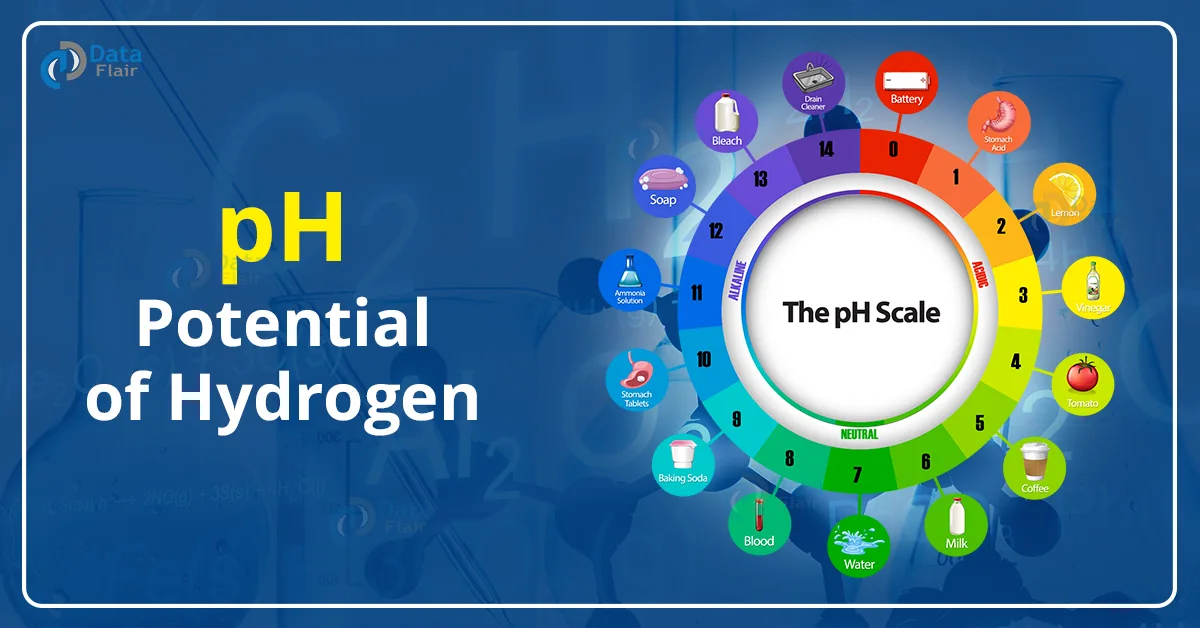FREE Online Courses: Your Passport to Excellence - Start Now
pH stands for Potential of Hydrogen. It is also called the negative logarithm of H+ ion concentration. pH is the strength of hydrogen and describes the concentration of hydrogen ions in a solution. It indicates the acidity or basicity of a solution which depends on the number of H+ and OH– ions produced.
A logarithmic scale known as the pH scale conveniently expresses the concentration of hydronium ions. A pH scale indicates the pH value of a solution. This value can vary from 0 to 14 where the pH of acids and bases is defined as the negative logarithm (with base 10) of activity of hydrogen ion (H+).
The pH of Acid And Base
There are three divisions on a pH scale:
1. From 0 to 7: Acidic solutions, with solutions with a pH-value of 0 being extremely acidic (more H+ ions). Level of acidity decreases as the pH value increases. Examples of acids: Nitric acid(HNO3), Sulphuric acid(H2SO4), Triflic acid [H(CF3SO3)], Hydrochloric acid (HCl), etc.
2. From 7 to 14: basic solutions, with solutions with a pH-value of 14 being extremely basic or alkaline (more OH- ions). Examples of bases: Acetone (C3H6O), Ammonia (NH3), Sodium Hydroxide (NaOH), Calcium Hydroxide (Ca(OH)2.)
3. Equal to 7: neutral solutions.
Importance of pH
- There is a particular range of pH that any living organism can withstand. Any adjustments in this range can make life difficult for these organisms. For example, an increase in the pH of water affects the survival of marine life.
- HCl in the human stomach helps with digestion but too much of it can cause discomfort and pain. Antiacids can minimize this.
- Toothpaste is basic in nature and helps balance the pH in our mouths as the bacteria in our mouths generate acids and lower the pH. This prevents decay in our mouths.
- When a bee stings us it injects methanoic acid through its sting. Thus, it is good to use baking soda on the sting as it helps maintain the surface pH.
